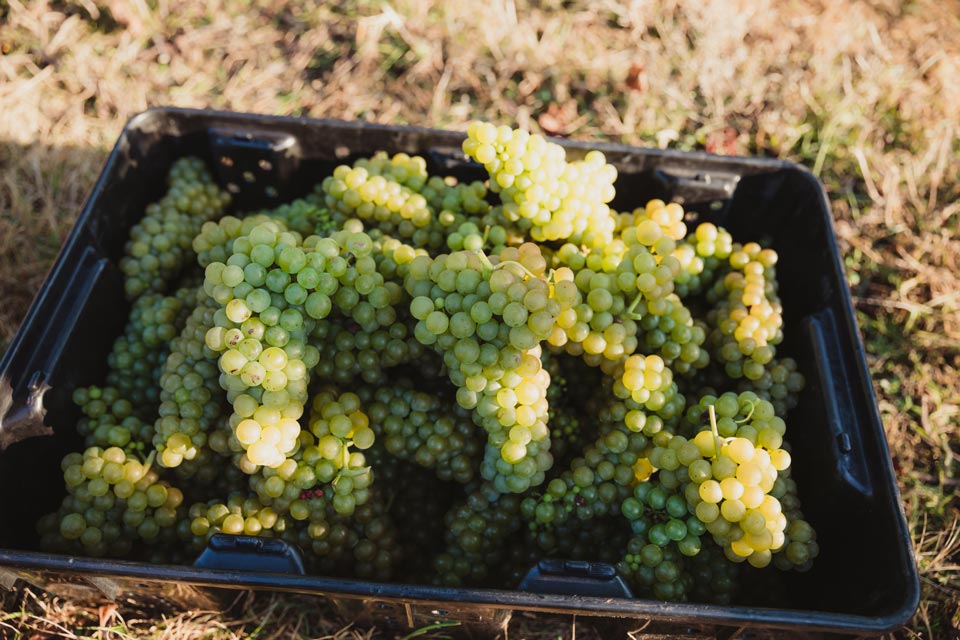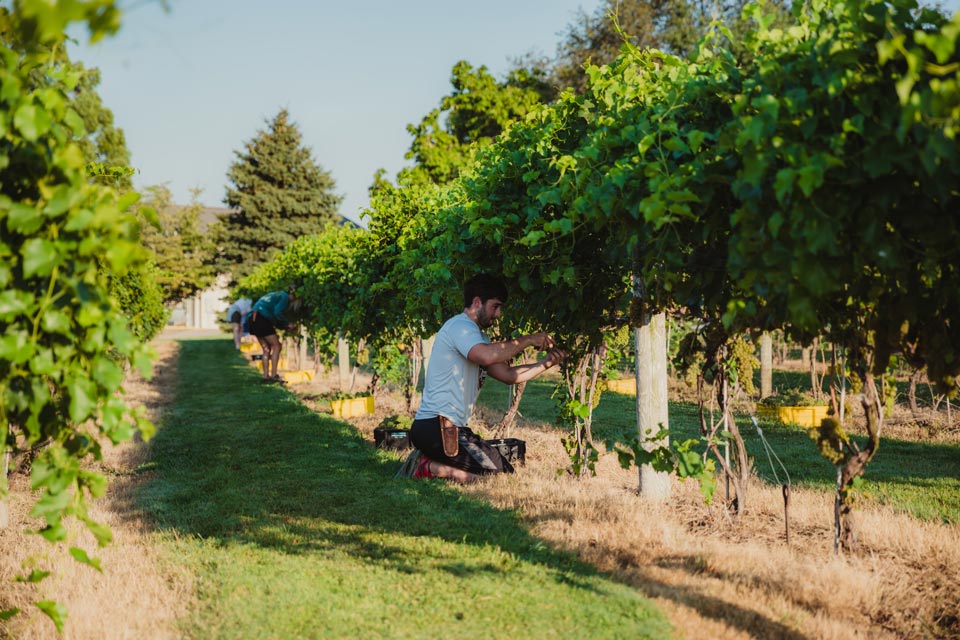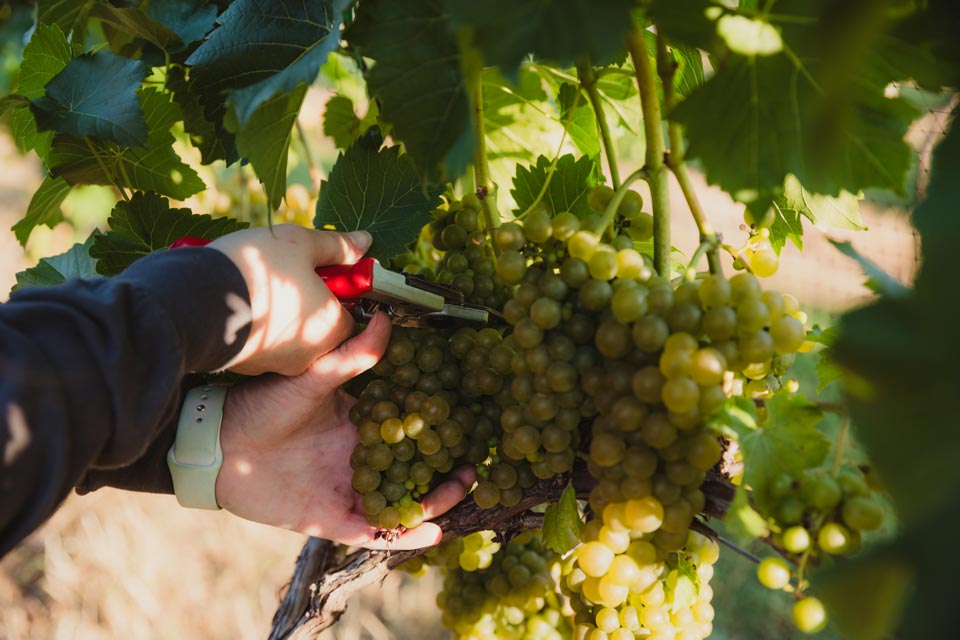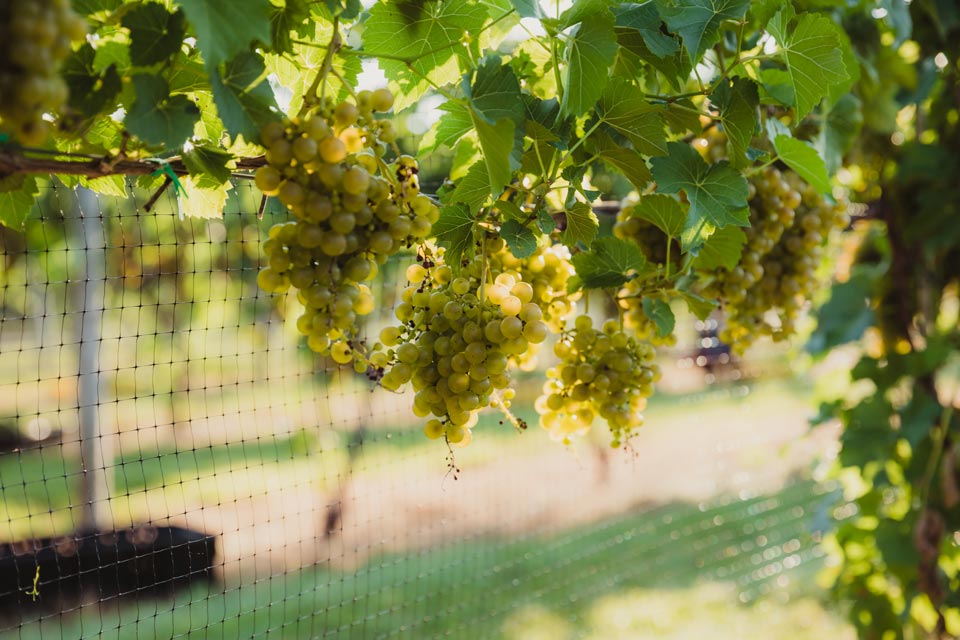Vineyards & Winemaking
The Vineyard & Grounds
•••
The grounds at Beachaven consist of our tasting room and gift shop, bottling room and tank room that opened its doors in 1987. It expanded with the addition of two warehouses and an additional, larger tank room.
The grounds also consist of three acres of grapevines; Concord – a red, American grape variety, Catawba – a red American hybrid variety and Seyval Blanc – a white French hybrid.
25 percent of the grapes, including our own, are grown in the state of Tennessee. The rest of the grapes and juice come from California, Washington, Florida, and New York.
12 acres total lends us plenty of space for our Jazz on the Lawn concert series as well as our Seasonal Music series. Jazz on the Lawn has historically boasted crowds in excess of 3000 guests and feature live music from local artists, Beachaven wines by the glass or the bottle, and local food options.
Harvesting, crushing
& pressing
•••
In late August, early September we begin Harvest Season in the vineyard. Our Seyval Blanc is picked by hand while Concord and Catawba are harvested by machine. Once picked, the bin of fruit is dumped in the hopper where the grapes are fed into the crusher/de-stemmer. This machine starts by separating the berries from the stems. Then it feeds the berries down between 2 rollers where they are gently crushed. The berries fall into a must pump and will go in one of two directions: if the berries are red, they will move into the tank room into one of the large fermentation tanks. Here the juice will ferment on the skins of the berries for up to 2 weeks, extracting the color and flavor. If the berries are white, they will go directly to the bladder press.
The bladder press will gently press out all the juice from the berry. This works by inflating the bladder inside and the berries are pressed up against the walls of the press and release their juice. A typical pressing cycle is approximately 90 minutes. The press can hold approximately 20,000 pounds or 10 tons of fruit at a time.
WineMaking
•••
We have a total tank capacity of 82,500 gallons. This room holds the majority of that at just over 58,000 gallons. The tank sizes range from 500 – 6000 gallons. All of our fermentations take place in this room. Stainless steel tanks are used for this process as well as the aging process because of a couple of reasons. Stainless steel does not impart any flavor into the juice or wine, it is easy to clean, and it is relatively easy to control the temperature.
Fermentation begins with the addition of cultured yeast cells that will turn the sugars into alcohol. This will occur between 55-60 degrees for white wines and 60-70 degrees for red wines. We can control this temperature by running cool water through the cooling jackets that are installed on each of the tanks. Maintaining these fermentation
temperatures allows the wine to maintain its fruity and floral tastes and aromas.
After fermentation, dead yeast cells and other grape solids fall to the bottom of the tank forming a sludge like mixture. The wine is racked off, which is the process of moving the clear wine off the sediment and into a clean tank. The old tank is cleaned and then sanitized with an acid sanitizer by our production crew. They like to say that winemaking is 90% cleaning.
Cold stabilization usually occurs in the winter. The tanks are lowered from their normal 58 degrees down to 28 degrees for about 6 weeks. Tartaric acid is a major component of wine. At cold temperatures, this acid will precipitate out of solution as tartrate crystals. These crystals are known as “wine diamonds” and will form at the bottom of the barrel or on the bottom of the cork. Many consumers assume these crystals are a defect. In order to prevent these crystals from forming in the bottle, we cold stabilize all of our wines. Each individual wine is racked and filtered off of these crystals. The tank is then brought back up to the 58 degrees and the wines are considered “finished”
Why do we keep the tank room at 58 degrees? This is the optimal temperature for wine. This has been passed down from the beginning of wine-making when it was kept in caves that are naturally 58 degrees.
Total time for wines not in barrels: approximately 9 months.
Total time for wines that spend time in barrels: 2 – 2.5 years.
After the wine is finished it will remain in our tanks until we are ready for it to be bottled. All wines that are considered sweet or dessert-style will then have additional sugar syrup added to achieve the desired sweetness.
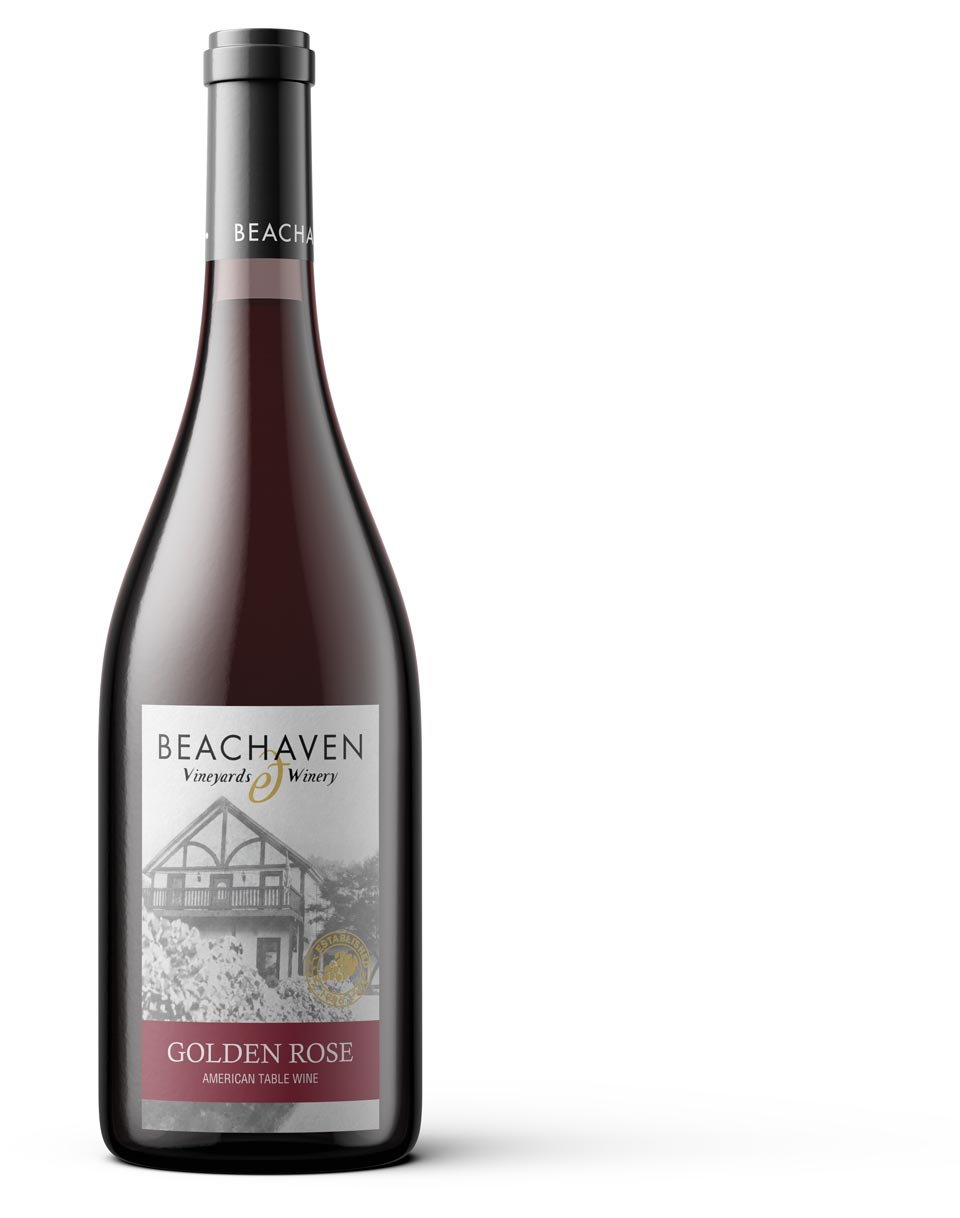
Barrel Aging
•••
We use American Oak barrels for all our barrel aging. Barrels can hold 59 gallons and are used to add a complexity to the wine. The flavors and aromas that can be gained from barrel aging include vanilla, oak, cedar, coconut, toast, and others. Typically this type of aging only occurs with red wines, but some whites, such as Chardonnay may benefit from spending some time in oak. We use the barrels approximately 5 years and then they are retired. At this point, none of the desired qualities can be extracted from the oak.
You will see that some barrels are carved. This was done by Dutch Mann, a World War II veteran, while the wine was still in the barrel. These carvings have become a timeline of Beachaven. Once the barrel has been retired, the front is cut off, stained and hung inside our bottling room.
Bottling
•••
We typically bottle in the spring and summer, but can bottle at any time throughout the year. It came to us in three separate parts directly from Italy. This line can bottle approximately 40 bottles a minute, or 2400 bottles in an hour. We do not run it at this speed because it is difficult to keep up with.
The process begins by pumping the wine directly from the tank in the Small Tank Room through a hose connected to the bottling line.
- The wine is filtered one last time on its way to the line.
- Empty bottles are loaded onto the conveyor belt where they are rinsed with water to remove any cardboard dust.
- After rinsing, the bottles are injected with a carbon dioxide gas to remove any oxygen from the bottle and helps protect the wine from oxidation.
- Twelve bottles are filled at a time. The bottles are then leveled to exactly 750 mL and any extra goes back into the filling bowl to fill another bottle. This saves us wine!
- The bottle is vacuum corked with a synthetic cork. The advantages of synthetic corks are that they never dry out and reduce the amount of oxygen reaching the wine during storage.
- Finally, the capsules are heat-sealed on the bottle and a label (front and back) is applied.
- The last step is placing the bottles (12 at a time) into a case box that will be glued, stacked and sent to the warehouse.
- We produce approximately 168,000 bottles or 14-15,000 cases a year.


